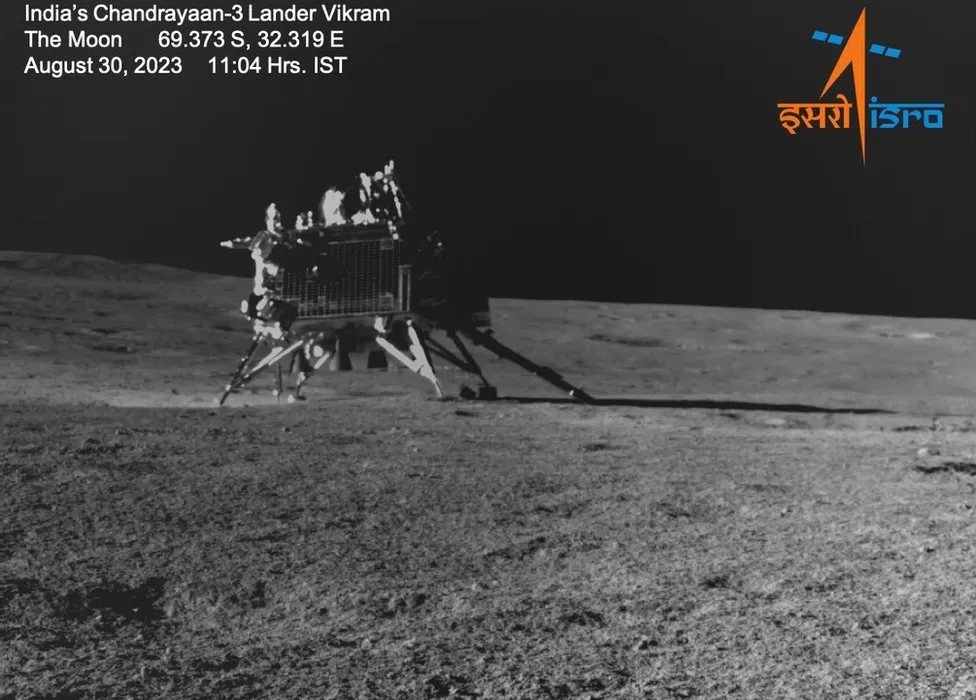Isro puts India’s Moon lander and rover in sleep mode

As soon as the solar power is depleted and the battery is drained, they will fall asleep next to each other.
When the next lunar day begins on 22 September, Isro hopes they will reawaken.
In order for the lander and rover to function and charge their batteries, they need sunlight.
A lander called Vikram, carrying a rover called Pragyaan, landed on the Moon’s little-explored south pole on 23 August.
Thus, India became the first country to land near the lunar south pole. After the US, the former Soviet Union, and China, it became the fourth country to achieve a soft landing on the Moon.
India’s space agency has been providing regular updates on the lander’s movements and findings, as well as sharing images taken by the lander and rover.
On Monday morning, Isro announced that Vikram had “soft-landed on the Moon again!”
It rose up by about 40cm [16 inches] after the Chandrayaan-3 mission’s lander fired its engines and landed at a distance of 30-40cm, Isro said. Chandrayaan-3’s landing was carefully timed to coincide with the start of a lunar day, which corresponds to roughly four weeks on Earth. Isro said this would give the lander and rover 14 days of sunlight to charge their batteries. Both assignments have now been completed.
Initially, Isro had said the lander and the rover would cease to function once night fell, which corresponds to two weeks on Earth. Scientists say they may come back to life when the next lunar day begins. China’s Chang’e4 lander and Yutu2 rover, for instance, woke up several times with the sunrise.
